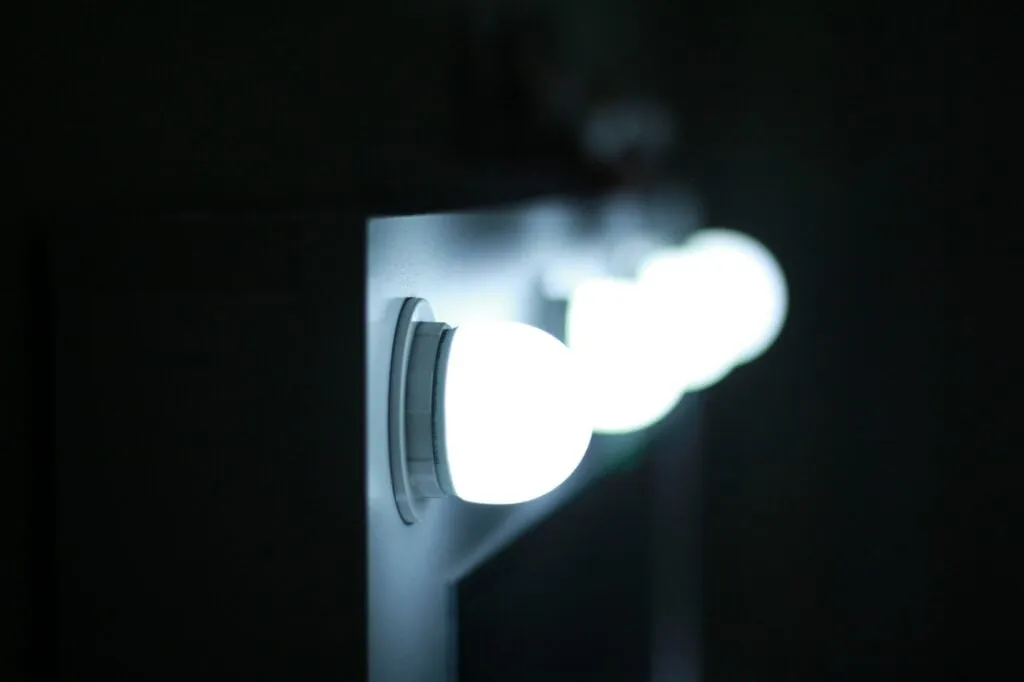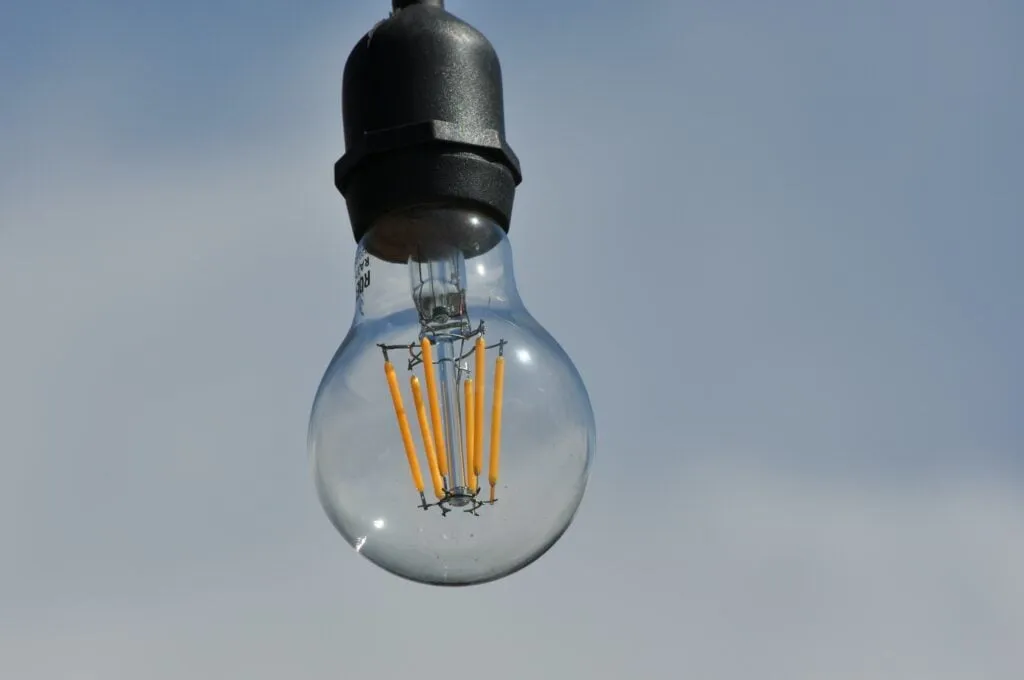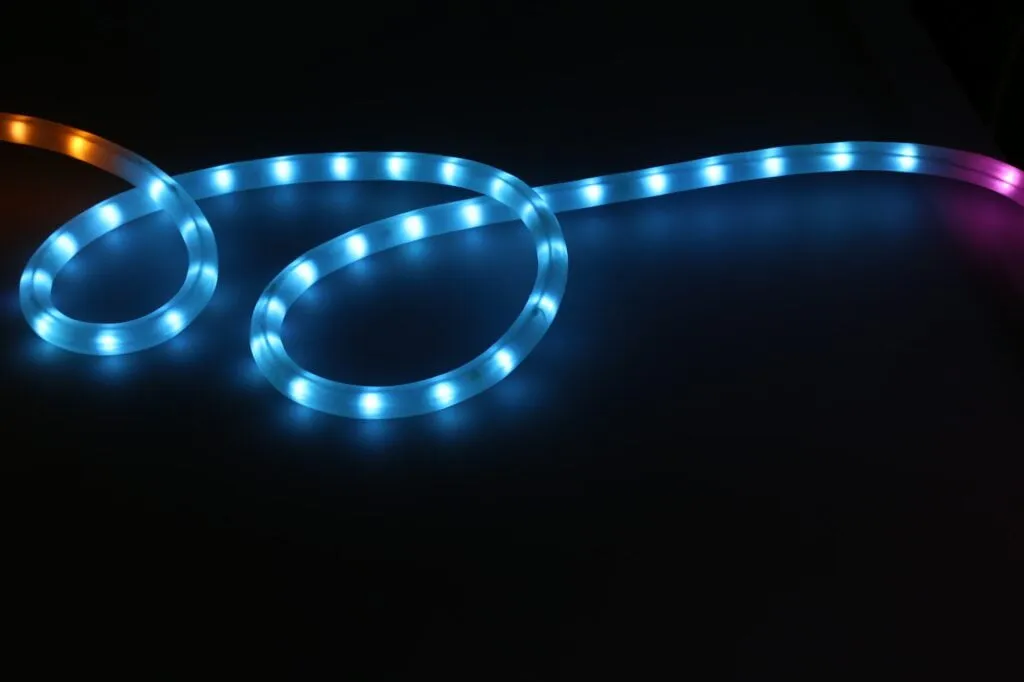Lighting is crucial in our daily lives, illuminating various tasks and activities. As energy costs continue to rise and environmental concerns increase, it’s essential to consider energy-efficient lighting options. One of the most effective ways to reduce energy consumption and save money on your electricity bill is to switch to LED lighting. In this guide, we’ll explore the benefits of LED lights, how they work, and how to choose the right LED lighting for your home.

What Are LED Lights?
LED stands for Light Emitting Diode, a semiconductor that emits light when an electric current passes through it. LED lights are a popular choice for energy-efficient lighting because they use significantly less energy and have a longer lifespan than traditional incandescent and compact fluorescent (CFL) bulbs. They also produce less heat, reducing the fire risk and making them safer.

WiZ works with your existing Wi-Fi router. No additional gateway is needed.
Benefits of LED Lighting
Switching to LED lighting offers numerous advantages over traditional lighting options. Some of the main benefits include:
- Energy Efficiency: LED lights are significantly more energy-efficient than incandescent and CFL bulbs. They use up to 90% less energy than incandescent bulbs and approximately 50% less energy than CFLs. Reduced energy consumption translates into lower electricity bills and a smaller carbon footprint.
- Longevity: LED lights have a much longer lifespan than traditional bulbs, with some lasting up to 50,000 hours or more. You’ll need to replace them less frequently, saving money on replacement costs and reducing waste.
- Durability: LEDs are more durable than incandescent and CFL bulbs, as they don’t have fragile filaments or glass enclosures. This makes them resistant to breakage and better suited for various environments, including outdoor settings and areas prone to vibration.
- Instant Illumination: Unlike CFL bulbs, which can take a few seconds to reach full brightness, LED lights provide instant illumination when switched on. This can be particularly useful in areas where quick, bright lighting is needed, such as stairwells and security systems.
- No UV Emissions: LED lights emit little to no ultraviolet (UV) radiation, which can cause fabrics, artwork, and other sensitive materials to fade. This makes them an ideal choice for lighting applications where UV exposure is a concern, such as in museums or retail stores.

Types of LED Lights
There are several types of LED lights available on the market, each designed for specific applications and settings:
LED Bulbs
LED bulbs replace traditional incandescent and CFL bulbs in various fixtures, such as table lamps, ceiling lights, and wall sconces. They come in multiple shapes, sizes, and color temperatures, making them suitable for various lighting needs.
LED Tubes
LED tubes are designed to replace traditional fluorescent tube lights, providing energy-efficient and long-lasting illumination for commercial and industrial settings. They are available in various lengths and color temperatures and can be installed in existing fixtures with minimal modifications.
LED Strip Lights
LED strip lights are flexible strips of LEDs used for various decorative and accent lighting applications, such as under-cabinet, cove, and shelf lighting. They come in multiple colors and can be cut to length, allowing for customization and easy installation.
LED Downlights
LED downlights, also known as recessed or can lights, are installed into a hollow opening in the ceiling, providing a sleek and modern lighting solution. They are often used in kitchens, bathrooms, and living spaces and are available in various color temperatures and beam angles.
LED Floodlights
LED floodlights are high-intensity, broad-beamed lights typically used for outdoor applications, such as security lighting, landscape lighting, and illuminating large areas like parking lots and sports fields. They are energy-efficient, durable, and have a long lifespan, making them an excellent choice for outdoor lighting.
Choosing the Right LED Lighting for Your Home
When selecting LED lighting for your home, it’s essential to consider several factors to ensure the best fit for your needs:
- Color Temperature: LED lights come in various color temperatures, measured in Kelvin (K). Lower color temperatures (around 2700K) produce a warm, yellowish light similar to traditional incandescent bulbs, while higher color temperatures (around 5000K) emit a cool, bluish-white light. When selecting the appropriate color temperature, consider the desired ambiance and purpose of the space.
- Lumens: Lumens measure the total amount of visible light emitted by a light source. When choosing LED lights, look for the lumens rating to determine the brightness of the light. Higher lumens indicate a brighter light, while lower lumens produce a more subdued illumination.
- Wattage: Wattage is a measure of the amount of energy used by a light source. LED lights have a lower wattage than incandescent and CFL bulbs, using less energy to produce the same light. Check the wattage rating to ensure compatibility with your existing fixtures and gauge the LED light’s energy efficiency.
- Dimmability: Not all LED lights are dimmable, so if you plan to use a dimmer switch, choose LED lights specifically designed for this purpose. Using non-dimmable LED lights with dimmer switches can lead to flickering, reduced lifespan, and other performance issues.
- Compatibility: Ensure your LED lights are compatible with your existing fixtures, including the size, shape, and base type. Most LED bulbs are designed to retrofit existing fixtures, making switching from traditional bulbs to LED lighting easy.

Wrapping Up
LED lighting is an energy-efficient, long-lasting, and versatile option for various home applications. By understanding the benefits, types, and factors to consider when choosing LED lights, you can make informed decisions and enjoy the energy savings and improved performance LED lighting offers.





